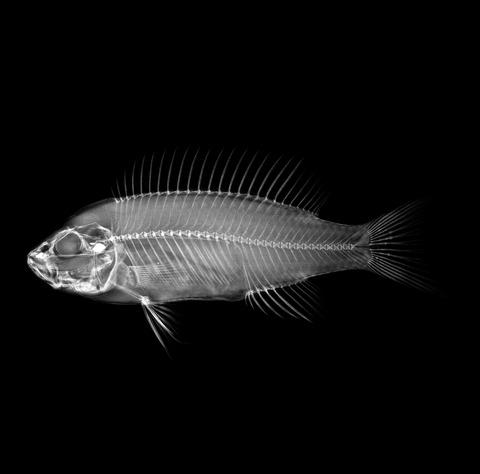当前位置:
X-MOL 学术
›
Funct. Ecol.
›
论文详情
Our official English website, www.x-mol.net, welcomes your feedback! (Note: you will need to create a separate account there.)
Ecological variation drives morphological differentiation in a highly social vertebrate
Functional Ecology ( IF 5.2 ) Pub Date : 2021-06-10 , DOI: 10.1111/1365-2435.13857 Annika Freudiger 1, 2 , Dario Josi 1, 2 , Timo Thünken 1, 3 , Fabian Herder 4 , Jana M. Flury 4 , David A. Marques 5, 6 , Michael Taborsky 1 , Joachim G. Frommen 1, 2
中文翻译:

生态变异驱动高度社会化脊椎动物的形态分化
更新日期:2021-06-10
Functional Ecology ( IF 5.2 ) Pub Date : 2021-06-10 , DOI: 10.1111/1365-2435.13857 Annika Freudiger 1, 2 , Dario Josi 1, 2 , Timo Thünken 1, 3 , Fabian Herder 4 , Jana M. Flury 4 , David A. Marques 5, 6 , Michael Taborsky 1 , Joachim G. Frommen 1, 2
Affiliation

|
- Animals may respond to ecological heterogeneity by genetic differentiation or phenotypic plasticity. Responses of organisms to their ecology can include adaptation at various levels of organization, including morphology, behaviour and social structure. Adaptations at one level might constrain or enhance adaptations on other levels, which highlights the importance of understanding their interactions.
- In highly social animals, understanding the influence of their ecological niche on the evolution and maintenance of complex social organization poses an intriguing challenge. Predation risk and habitat characteristics determine social structure in the cooperatively breeding cichlid Neolamprologus pulcher. Here we examine how varying combinations of these ecological factors across eight distinct populations influence morphological differentiation.
- We investigated the relationship between body shape and ecological parameters for 137 wild-caught individuals from eight distinct populations. Furthermore, we examined the genetic structure and differentiation among these populations using microsatellites. Finally, to disentangle heritable from plastic responses, we raised two successive generations from six populations in the laboratory under common garden conditions and screened 188 individuals for morphological differentiation.
- We found that body shape of N. pulcher strongly correlates with the measured ecological parameters. Low predation risk, low habitat structure and small shelter size favoured shallow bodies, whereas at the opposite end of these environmental gradients deep body shapes prevail. These consistent morphological differences persisted over two laboratory-reared generations, revealing a heritable basis. In contrast to the significant effect of local ecology on morphological differentiation between populations, both geographical and genetic distance had little explanatory power, suggesting that morphological differentiation between populations is not a simple by-product of genetic isolation. Remarkably, the largest difference in body depth emerged between the two populations located closest to each other, but differing strongly in their ecological niche.
- These results highlight that morphological variation is a key component of local adaptation in neighbouring populations of a highly social species. Such morphological differentiation has the potential to influence individual cooperative behaviour, which will eventually feed back on group structure and mediate the evolution and maintenance of complex social systems.
中文翻译:

生态变异驱动高度社会化脊椎动物的形态分化
- 动物可能通过遗传分化或表型可塑性对生态异质性做出反应。生物体对其生态的反应可以包括在不同组织层次上的适应,包括形态、行为和社会结构。一个层面的适应可能会限制或增强其他层面的适应,这凸显了理解它们之间相互作用的重要性。
- 在高度社会化的动物中,了解它们的生态位对复杂社会组织的进化和维持的影响提出了一个有趣的挑战。捕食风险和栖息地特征决定了合作繁殖慈鲷Neolamprologus pulcher 的社会结构。在这里,我们研究了八个不同种群中这些生态因素的不同组合如何影响形态分化。
- 我们调查了来自 8 个不同种群的 137 个野生捕捞个体的体型和生态参数之间的关系。此外,我们使用微卫星检查了这些种群之间的遗传结构和分化。最后,为了从塑料反应中分离出可遗传性,我们在实验室中常见的花园条件下从六个种群中连续培养了两代,并筛选了 188 个个体进行形态分化。
- 我们发现N. pulcher 的体型与测量的生态参数密切相关。低捕食风险、低栖息地结构和小庇护所有利于浅体,而在这些环境梯度的另一端,深体形状占优势。这些一致的形态差异持续了两个实验室饲养的世代,揭示了遗传基础。与当地生态对种群间形态分化的显着影响相反,地理距离和遗传距离都没有什么解释力,这表明种群间形态分化不是遗传隔离的简单副产品。值得注意的是,身体深度的最大差异出现在彼此最接近的两个种群之间,但它们的生态位差异很大。
- 这些结果强调,形态变异是高度社会化物种的邻近种群局部适应的关键组成部分。这种形态差异有可能影响个体的合作行为,最终将反馈到群体结构并调节复杂社会系统的进化和维持。



























 京公网安备 11010802027423号
京公网安备 11010802027423号